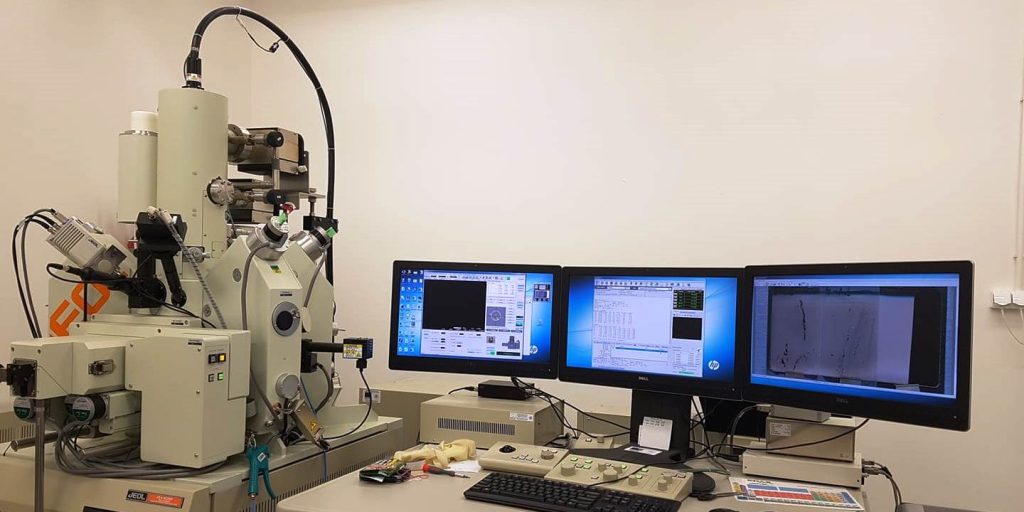
Electron Probe Microanalyzer (EPMA) is an analytical tool used to non-destructively determine the chemical composition of small volumes of solid materials. This analytical technique has a high spatial resolution and sensitivity. A beam of accelerated electrons is focused on the surface of a specimen using a series of electromagnetic lenses, and these energetic electrons produce characteristic X-rays within a small volume (typically 10 to 30 cubic microns) of the specimen. The characteristic X-rays are detected at particular wavelengths, and their intensities are measured to determine concentrations. All elements (from Be to U) can be detected because each element has a specific set of X-rays that it emits. The FE electron gun (Schottky) produces an extremely small spot size at low accelerating voltage even with high probe currents (40nm at 10na and 10kV, 100nm at 100na and 10kV), allowing for WDS analyses with high X-ray spatial resolution.
Our electron microprobe is outfitted with a SDD (silicon drift detector) energy-dispersive spectrometry (EDS) system with 133eV resolution, which we use for rapid identification of phases and elemental abundances.
Our microprobe also has a wavelength-dispersive spectrometry (WDS) system; it is outfitted with five WDS spectrometers and ten different crystal types (TAPJ 2x, LIFL, LIFH, LIF, PET, PETJ, PETH, LDE1, LDE2). EDS and WDS are fully integrated systems.
Microprobe is equipped with optical microscope (reflected light) and panchromatic cathodoluminiscence.
The JXA-8530F operates on PC Windows for data acquisition and analysis. Monazite age mapping and Specimen Navigator is part of software package.
Contact person:


